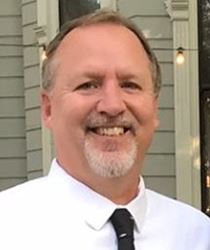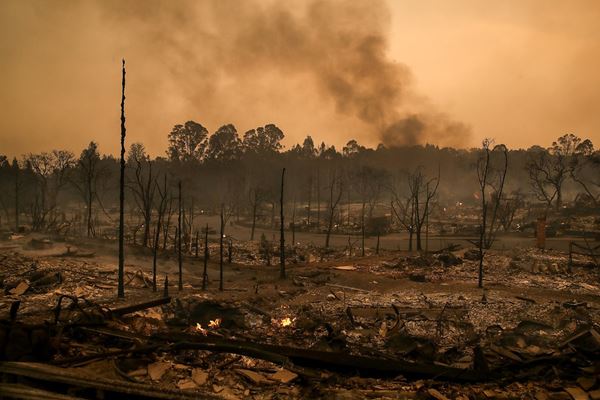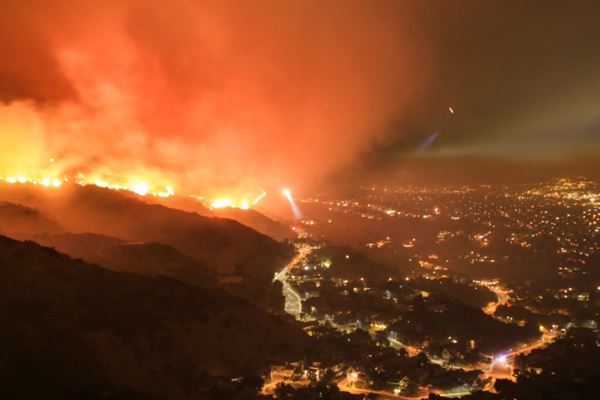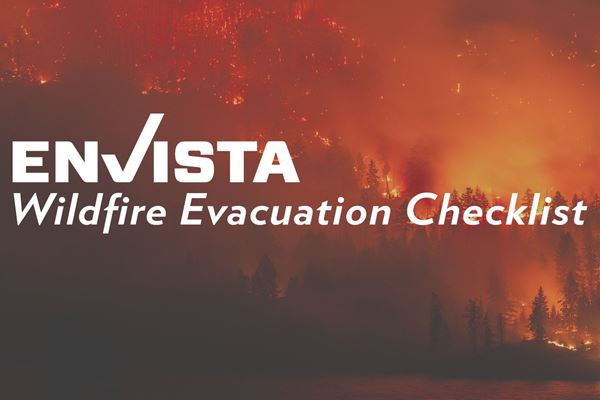5 Frequently Asked Questions in Wildland Fire Claims
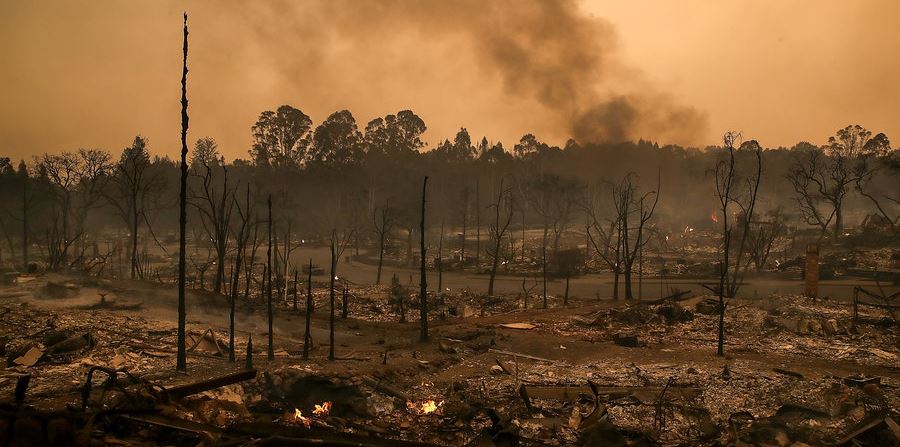
Burning wildfires, or bushfires, can cause severe havoc on structures and landscapes with equally aggressive aftermath. Understanding the cause and path of the fire, how weather or terrain can affect the movement of the fire, and if structures are built within high-risk areas or with combustible material, can provide insight on how to conduct insurance claim investigations and determine potential liability or subrogation opportunities.
Our fire investigators list out their top five questions to help break it all down for you.
1. What is defensible space and why it is required in some areas?
Within the context of fire control, defensible space is a natural or landscaped area around a structure that has been maintained and designed to reduce fire danger. Defensible space, especially in the wildland-urban interface (WUI), reduces the risk that the fire will spread to a structure or from one area to another. This is usually done by clearing and separating highly flammable material so there are no adequate paths for fire to travel or reach a structure. It also provides firefighters safe access from which to defend a threatened area. This is an important point because some fire service personnel do not even attempt to protect structures without adequate defensible space, as it is less safe and their efforts are less likely to succeed.
In many areas, residents and business owners are required to provide defensible space around a business, structure, or home. For example, in California, 100 feet of defensible space is required. This distance may increase if the area is prone to certain types of fuel sources (e.g. vegetation) or far from fire service assistance. Each area requires its own plan and each structure requires its own attention to detail.
2. What is the Wildland Urban Interface (WUI)?
The Wildland Urban Interface (WUI) contains areas predisposed to wildland fires, where structures and infrastructure exist. Additionally, if a community falls within 0.5 miles of a WUI zone, it is included as part of the WUI.
Many times, as you can imagine, these areas are more mature and well-developed, with high-value properties. Although to actually be a part of the WUI, the area must also contain wildland fuel—vegetative material that can allow wildland fires to easily spread. Wildland fuel mixed with the right fuel type or environment creates a recipe for destruction.
The Federal Register splits the WUI into two categories, of which they define as:
- Intermix WUI. Lands that contain at least one housing unit per 40 acres (16 ha), in which vegetation occupies more than 50% of terrestrial area; a heavily vegetated intermix WUI is an area in which vegetation occupies over 75% of terrestrial area (at least 5 km2).
- Interface WUI. Lands that contain at least one housing unit per 40 acres (16 ha), in which vegetation occupies less than 50% of terrestrial area (at least 2.4 km2).
If we've learned anything in the past few years, it's that wildfires are getting more destructive, largely because of the expanse of infrastructure within WUI zones. With population increases occurring in both the WUI and surrounding rural areas, more structures have been constructed, some of which with combustible material. Stricter codes have been put into place to try and limit the destruction that could be caused by a fire, such as Hazard Mitigation Planning.
According to FEMA, "Hazard mitigation reduces loss of life and property by minimizing the impact of disasters. This begins with state, tribal, and local governments identifying natural disaster risks and vulnerabilities that are common in their area. After identifying these risks, they develop long-term strategies for protecting people and property from similar future events. Mitigation plans are key to breaking the cycle of disaster damage, reconstruction, and repeated damage."
3. Why does a wildfire travel uphill faster than downhill? And, why is this relevant?
If you think about a car rolling down a hill, common sense dictates that gravity and the slope of the hill will determine the increase in the speed of the vehicle. It does not work that way during a wildfire. There are several important items that govern all wildfires—fuel, weather, and topography. Depending on these factors, a fire can extinguish itself fairly quickly, or it can turn into a raging inferno consuming large swaths of land.
The answer to this question is topography. Wind always travels up a slope versus down a slope, so the wind acts as a vehicle to push the fire uphill. From a more scientific point of view, fire, and the associated heat produced, travels vertically and to a point outward from the main fire. This causes preheating of the vegetation up the slope making it easier to ignite as the fire moves forward. The steeper the slope, the faster the fire travels up. This typically works in reverse going downhill as the fire, or heat, is not able to preheat the vegetation, thus the slower the fire spreads. Depending on where a property or home is located, given topography, this could affect their policy in terms of coverage.
4. How far can embers travel from a wildland fire?
This is a bit of a tricky question because depending on the particular fire, the answer can be all over the chart. However, in looking at the research that has been conducted on this topic, of which is not much, one could speculate that once airborne, these burning embers or firebrands can travel from one quarter to one mile in the wind. In order to better understand how far an ember can travel, one must understand some of the science associated with this topic.
Fuel
For any specific fire, the first thing to take into account is the type(s) of fuel. This is the biggest variable. One must take into account the density of the ember and the surrounding fuels or vegetation. Vegetation that contains resin or sap can make for a longer smoldering ember, as well as embers with greater density. The wind carries hot embers farther. Multiple types of vegetation contain the necessary composition and density to be a long-lasting ember. Pine needles, manzanita, and oak are the most common in California.
Wind Speed
The time an ember smolders is a set time based on the composition and size of the ember or fuel. Regardless of the wind speed, the ember will smolder for a certain amount of time, based on density and vegetation. The wind speed can make that time convert to distance, i.e. embers in a 40 mph wind will theoretically not travel as far as those in a 60 mph wind.
Humidity
This can be relative (air) humidity or fuel moisture. The relative humidity is less relevant once the fire gets going. Where the ember lands can be a bigger issue. If the fuel that the ember lands on has a higher moisture percentage, it will be harder for the ember to get that item to its ignition temperature. The drier the item is, the easier the ember can get it burning.
An important dynamic is the larger the fire the higher the smoke column. Embers can be carried up into the smoke column as well as blown out in front of the leading edge (head) of the fire. The higher the smoke column the further the wind can carry the ember. Most studies show a max distance of one mile from the head of the fire in the direction the wind is blowing.
5. Can you fully rely on the fire department's investigative report?
The answer is not as straightforward as one may think. All fire investigators assigned to a fire department, fire marshal's office, or other public agency strive to do a professional and thorough fire investigation to the level of their respective knowledge, skills, and abilities. Because approximately 80% of all fire departments in the U.S. are staffed by volunteers, their level of investigative expertise creates a challenge when it comes to answering this question. Additionally, not all public sector fire investigators are trained in the same way or are comparatively up to the same level. Some investigators receive extensive training, while others receive minimal or no training.
Public fire investigative agencies may look to determine if it is arson, and if it's confirmed it is not arson, the investigation stops. Public sector fire investigators, regardless of training, attempt to identify the origin and cause for the fire, but as one may suspect, if they get the origin wrong, the cause is also likely wrong. These fire investigators are not looking at the situation in terms of subrogation or liability from an insurance perspective, and sometimes obtaining a copy of their written findings or report is exceptionally difficult.
If there is any possibility for subrogation or liability defense, an outside subject matter expert can provide a level of certainty regarding potential exposure due to their level of knowledge, skills, training, and courtroom testimony experience.
Nuestros consultores están listos para ayudar.

